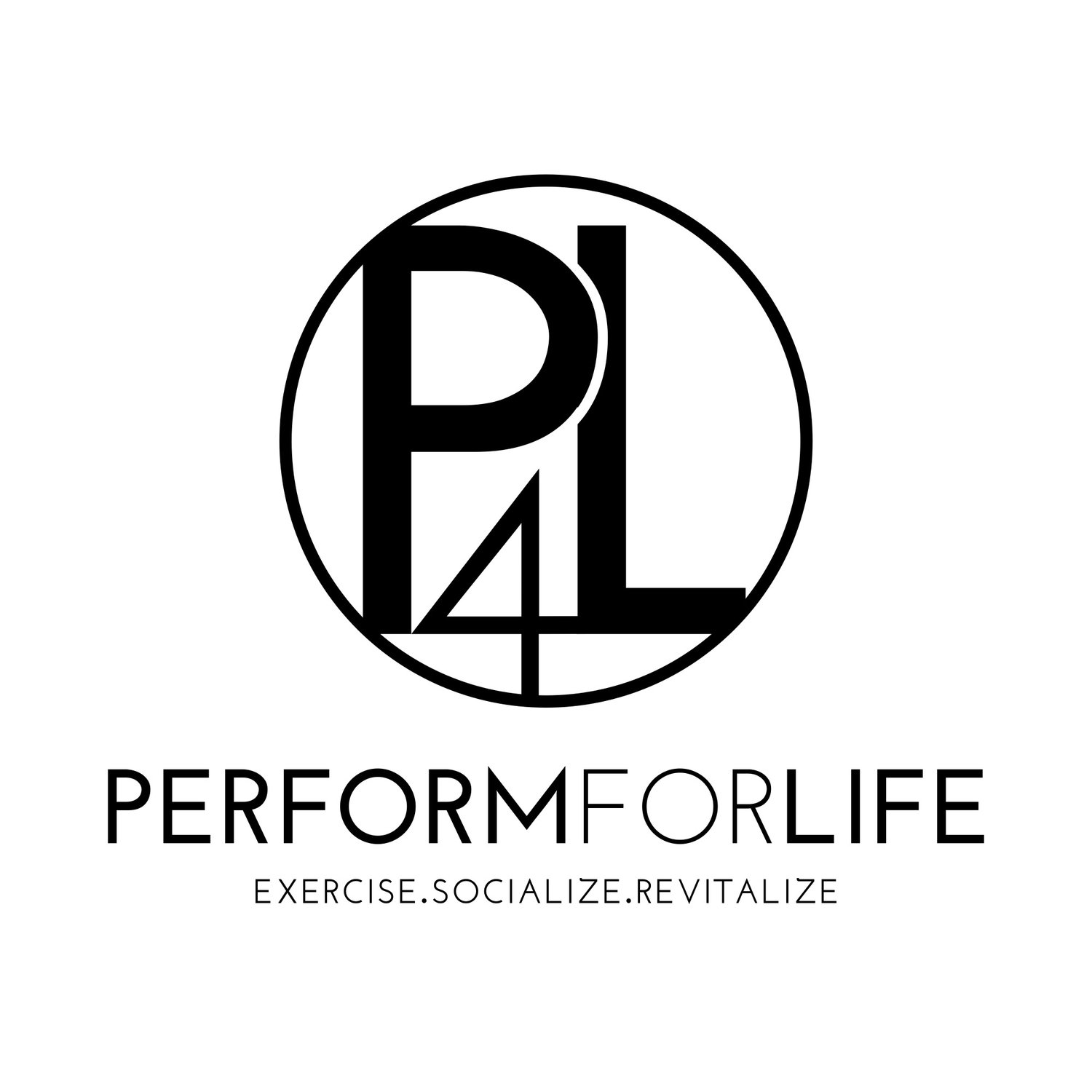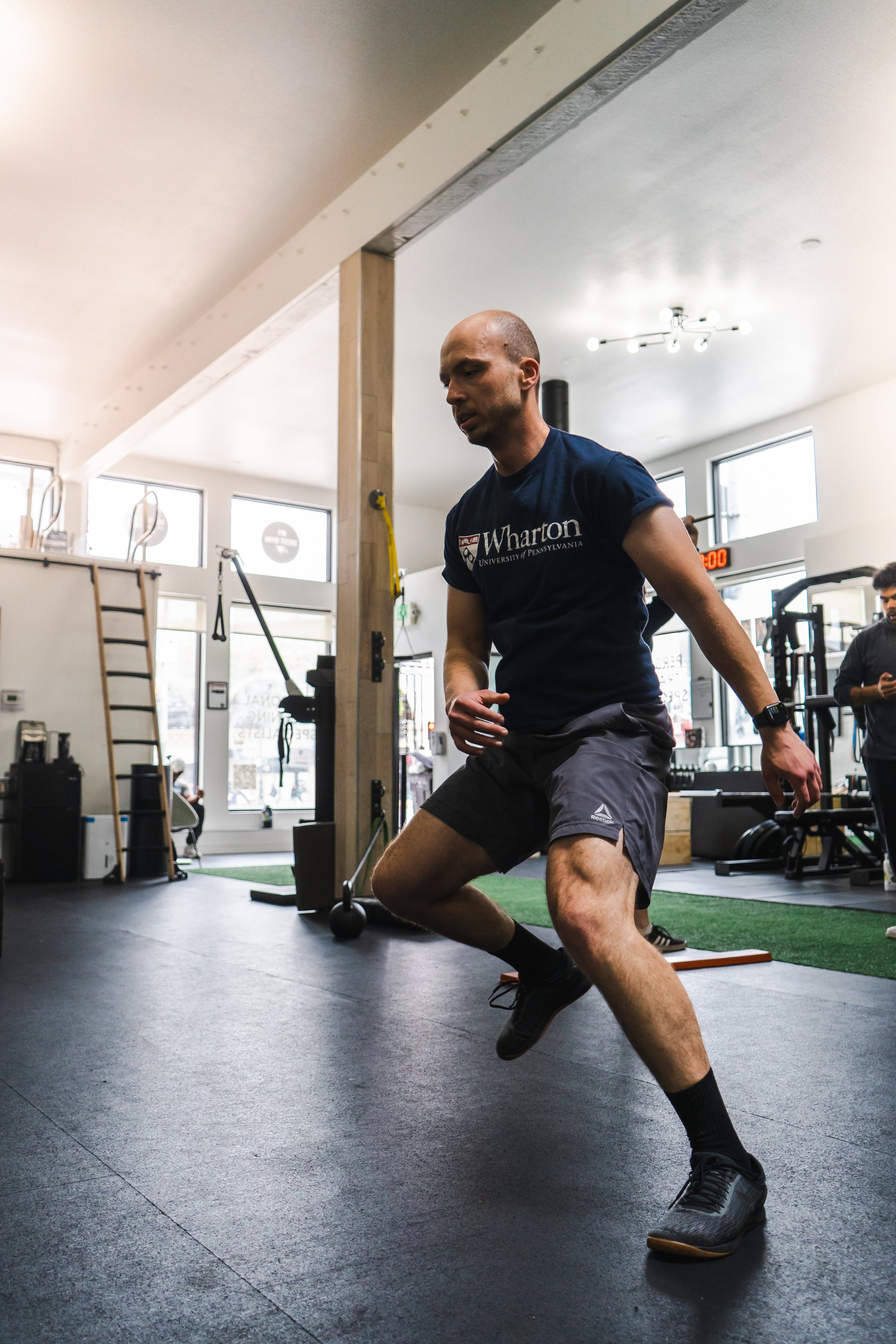5 Ways to Resolve Your Immobility
Do neck tension or pain and lower back pain sound familiar to you?
Maybe you’ve told yourself you’re too busy with work, but when you get home from a long day at work, the last thing you want to do is get moving. Or perhaps you’re exploring a new city, but after walking 12 miles, you notice your knees and calves aching. Even driving aggravates your right shoulder or upper back!
If you notice discomfort in reaching for something in the food cabinet, putting on a shirt, or reaching behind you in the car seat, perhaps you are being limited by your lack of mobility.
Below are some simple ways you can add effective mobility work either at home, in your office, or in your hotel room - and all you really need is a foam roller and a band or light dumbbell (if you’ve got one of those on the go).
Give them a try and see how they go!
1. SHOULDER MOBILITY and/or OVERHEAD MOVEMENT
Do you feel limited when you’re lifting overhead? Perhaps you’re trying to improve your throwing arm so you can win that San Francisco City Rec League game.
- Foam roller serratus slide and lift off - similar to the video linked, but at the top of the slide, you lift one arm off the foam roller at a time OR better yet, do it on the ground like this.
- This is great to improve your mobility, stability, and motor control. The serratus anterior muscle is a big player in overhead motion.
- This exercise focuses on upward rotation and posterior tilt of the scapula - as we want the scapula to be able to move in this motion when going overhead.
2. THORACIC SPINE EXTENSION & ROTATION
Do you sit 8 hours a day at work? Do you notice your shoulders rounding forward or feeling slouched forward?
- Thoracic spine (t-spine) extension on the foam roller: I’m sure most of you have seen or done this exercise at P4L, as this is a fantastic exercise for those of you with desk jobs or a job that requires bending over often.
- (Banded) Thread the Needle
- Adding a band to the exercise helps reach deeper ranges - just tie a band to a something sturdy and hold onto the band as you reach under
Rotation can be quite effective in improving T-spine extension as well, so this is a great exercise to help improve both.
3. PEC LENGTH
Do you notice your shoulders rounding forward or feeling slouched forward?
- Eccentric dumbbell fly on roller - I love this one when I really need to open up my shoulders and lengthen my pecs.
- Chronically tight pecs can lead to rounded shoulders and even neck and/or shoulder pain (the pec minor attaches on your scapula, and when tight, can round your shoulders forward). Paired with the t-spine extension or rotation, these mobilities are a great way to counteract the effects of sitting at a desk all day!
4. HIP INTERNAL ROTATION
Does your job require you to sit all day? Do you feel like your hips are always tight? Perhaps you have been dealing with some low back pain or even some knee pain.
- Supine 90/90 hip IR breathing - (for hip IR, walk the feet outwards, keeping the knees against the foam roller) - this is what I learned in the Clinical Athlete Weightlifting Seminar that I attended a few months ago.
Poor breathing patterns can actually have an effect on mental well-being and are linked with anxiety, depression and chronic stress. The process in which the diaphragm pulls air into the lungs is crucial in creating trunk stability, and trunk stability are crucial in stabilizing the spine and generating force at the hip or shoulder, which translates directly to workouts.
Proper breathing pattern maintains posture. Your body should be able to support itself without much effort - you shouldn’t need to clench your butt cheeks and pull your shoulders back to maintain proper posture. If you’re doing it right, you should just be there naturally.
This is good for getting you set in a more neutral position and opening up your hip joint internal rotation. Breathing plus internal rotation tends to be very beneficial for improving your hips’ ability to internally rotate, and gets the pelvis positioned more neutrally (the primary hip flexor, the psoas major, flexes and externally rotates. If chronically tight, it can cause long-term external rotation of the femur).
5. GLUTE ACTIVATION
Do you every feel like you spend most of your day sitting and working? Do you feel like your hips are always tight? Perhaps you’ve been dealing with some low back pain or even some knee pain.
- Sidelying clamshell - another golden nugget I learned from Dr. Quinn Henoch, DPT at the Clinical Athlete Seminar. This, along with rolling out the tensor fascia latae (TFL) and iliotibial (IT) band can help desensitize the hip before using the clamshell to activate the glutes.
- Weak and/or inhibited glutes may be related to your low back pain. Try this pairing out if you’re experiencing some low back pain and notice your glutes are “sleepy”.
Sure, you have your bridges and clams, but this pairing of exercise and self-myofascial release is extremely effective. Some glute activation in those exercises is great, but it’s even better when you can also maintain breathing patterns and trunk position.











